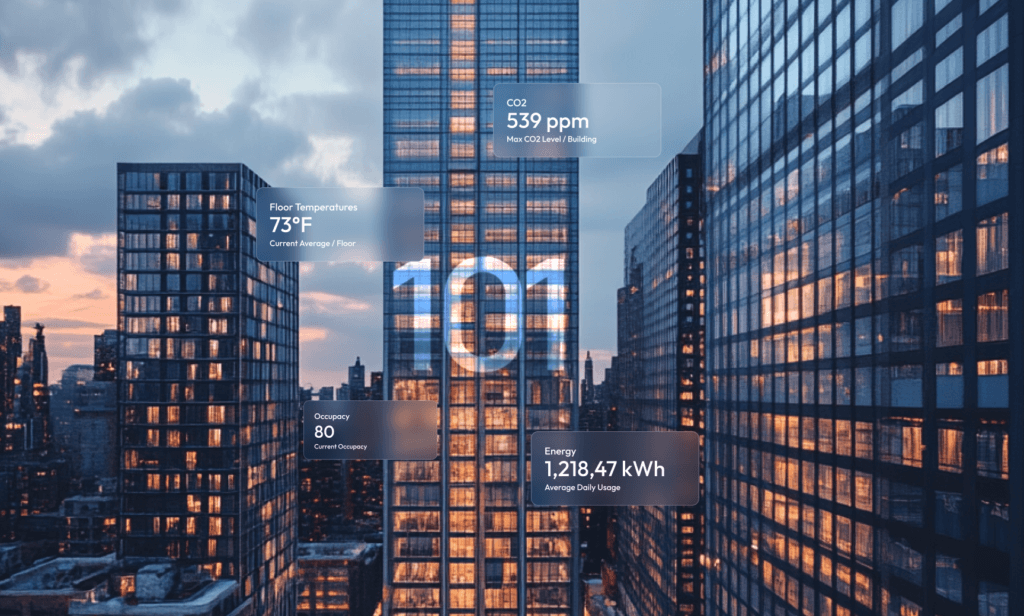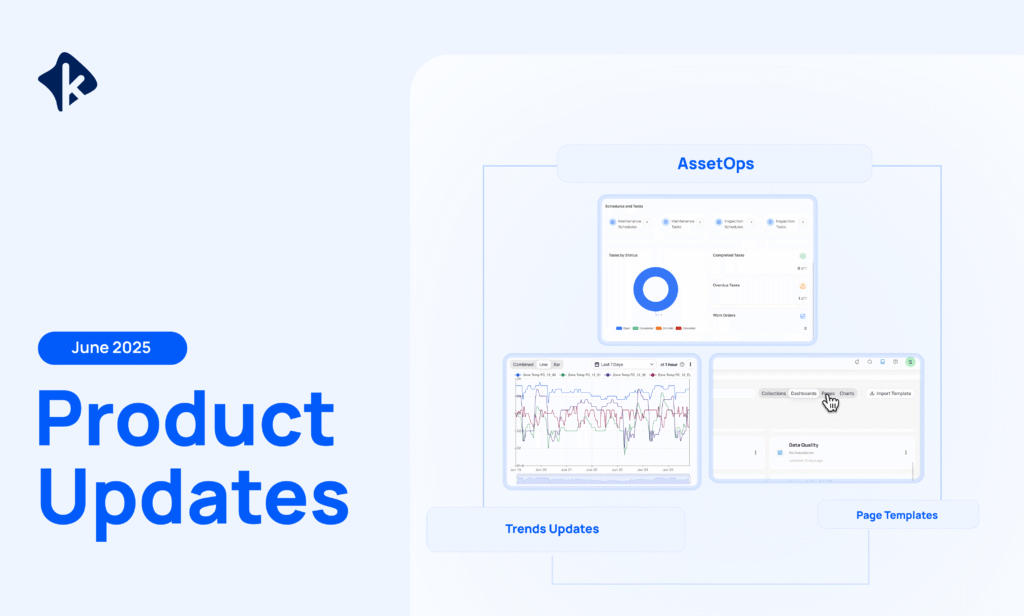By Urtina Gashi
On this page
Sign up to our newsletter
Subscribe to receive the latest blog posts to your inbox every week.
By subscribing you agree to with our Privacy Policy.
The idea of “smart buildings” has been making waves in the real estate industry for several years now. As technological advancements grow and sustainability becomes a priority for organizations, the need to optimize building operations, reduce energy consumption, and improve tenant experiences has never been more pressing. But what exactly makes a building “smart,” and how can you transform a traditional building into one?
In this article, we’ll break down the essentials of smart buildings and provide you with a checklist for your own building transformation. Whether you’re an owner, facility manager, or tenant, understanding the journey to becoming a smart building is critical to future-proofing your operations and meeting sustainability goals.

What is a Smart Building?
A smart building goes beyond having state-of-the-art HVAC systems or modern lighting you can control from a device. It integrates technology to create a seamless, efficient, and intelligent environment, optimizing everything from energy management to tenant comfort. Smart buildings use sensors, data analytics, automation, and cloud-based platforms to collect and interpret data from various sources like building management systems (BMS), IoT devices, and operational systems. The goal? To improve performance, increase energy efficiency, and enhance the overall experience of those who use the space.
For example, KODE OS serves as a smart building platform that unifies all these disparate systems into a single, easy-to-use interface. Through data normalization and real-time analytics, KODE OS enables property owners and managers to monitor and optimize building operations from anywhere, reducing energy use and operational costs while improving tenant satisfaction.
Why invest in Smart Buildings?
Before diving into the how-to, it’s important to understand the “why.” Here are some of the key benefits smart buildings offer:
- Operational Efficiency: Smart buildings simplify facility management by automating routine tasks such as heating and cooling adjustments, lighting controls, and fault detection. This allows facility managers to focus on higher-value activities.
- Energy Efficiency & Sustainability: With real-time monitoring and predictive analytics, smart buildings can reduce energy consumption and carbon footprints by up to 30%, contributing to both environmental and financial sustainability.
- Regulatory Compliance: Many regions now require buildings to meet stringent energy and sustainability regulations. A smart building helps ensure that compliance is continuously met through automated tracking and reporting.
- Enhanced Tenant Experience: By leveraging data, smart buildings can provide tenants with personalized experiences, improving comfort, safety, and satisfaction.
The Smart Building checklist
If you’re ready to transform your building, here’s a checklist of key steps to guide you through the process:
- Evaluate your existing architecture: Begin by assessing the current infrastructure of your building. What systems are in place, and how can they be improved? Are your HVAC, lighting, and security systems capable of integrating with newer, cloud-based solutions? It’s important to note that you don’t need all of these systems to get started. You can begin by optimizing one piece, and scale as needed.
A smart building platform streamlines the transition to cloud-based management by integrating with existing building systems. This approach allows you to maintain control over operations while benefiting from enhanced interoperability and real-time data access through the cloud. - Implement IoT Sensors: IoT sensors, which are small devices that collect and transmit data, are critical to making your building “smart.” They gather real-time data on temperature, occupancy, air quality, and energy use, providing the insights needed to make data-driven decisions.
Buildings that utilize a smart building platform like KODE OS can easily integrate various sensors, bringing all the data into one platform. This centralization allows you to visualize key metrics and trends, assisting in making informed decisions about your building’s performance and efficiency. - Data integration & normalization: A key challenge in managing a smart building is integrating data from multiple sources into a single, actionable platform. This is where data normalization comes into play, which refers to the process of organizing and standardizing data from various systems, whether from IoT devices or BMS, so that it’s structured, consistent, and reliable, making it easier to analyze and act upon.
Smart building platforms through their ontology, a framework or structure used to organize and define relationships between different types of data, automatically normalize all the data coming in making it ready for immediate use. This removes the needs for additional third-party business intelligence tools, streamlining the process of analyzing and acting on your data. - Automate building management: Automation is at the heart of a smart building. By automating everything from lighting to HVAC systems, you reduce human error and save on energy costs. Automation goes beyond simple tasks and expands to more complex ones like fault detection, functional testing, work orders and more. This allows building teams to focus on critical issues that require their attention, rather than spending time managing clerical tasks.
Solutions like Fault Detection and Diagnostics identify equipment inefficiencies early and provide actionable insights for preventive maintenance, helping you maintain smooth operations and avoid potential issues before they become major problems. - Consider tenant needs: Remember that tenants are at the core of any building’s success. Smart buildings must offer features that enhance tenant experience, from automated lighting and climate controls to integrated communication platforms that streamline interactions between tenants and property teams.
Smart building platforms offer tenants greater visibility into building performance, increasing transparency and fostering trust between the property owners and occupants. - Plan for scalability: As the needs of your building change, so should the technology you use. Make sure the solutions you implement today can scale with your operations in the future.
Smart building platforms, like KODE OS, are designed to be able to easily scale as new technologies emerge. This flexibility ensures that your systems can evolve and adapt to future innovations, keeping the building at the forefront of technology advancements.
Transitioning your building into a smart one is an investment, but the payoff is substantial. From enhanced energy savings to improved tenant experiences, the benefits of smart buildings go far beyond operational efficiency. By following the steps outlined and leveraging a powerful platform like KODE OS you’ll be well on your way to creating a future-proof, sustainable, and intelligent building.
The future of real estate is smart. Is your building ready?




